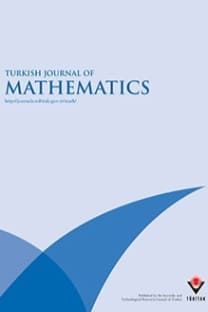Chaos in product maps
Devaney's chaos, topological transitivity, sensitive dependence on initial conditions
Chaos in product maps
___
- a non-negative k such that fk(x)∈ V, that is, if every pair of non-empty open subsets of X shares a periodic orbit. (If f is continuous and X non-Şnite, then this property implies chaos in the sense of Devaney by [2]; see also [10]).
- Theorem 3 Let X be any metric space and assume that the (not-necessarily continuous) map f : X→ X has the Touhey property. Let g : Y→ Y be a not-necessarily continuous, chaotic and topologically mixing map on the metric space Y. Then f× g : X × Y → X × Y is chaotic. Proof.
- property implies denseness of periodic points of f, hence, as the periodic points of g are also dense, we have denseness of periodic points of f× g. The transitivity of f × g can be seen as in the preceding proof.
- has no periodic points, but it is topologically transitive and sensitively dependent on initial conditions.
- ISSN: 1300-0098
- Yayın Aralığı: 6
- Yayıncı: TÜBİTAK
Pseudo simplicial groups and crossed modules
Statistical convergence of max-product approximating operators
Transversal lightlike submanifolds of indefinite sasakian manifolds
Number of pseudo--Anosov elements in the mapping class group of a four--holed sphere
Swan conductors and torsion in the logarithmic de Rham complex
Sait HALICIOĞLU, Abdullah HARMANCI, Nazim AGAYEV
Complete systems of differential invariants of vector fields in a euclidean space
Order-isomorphism and a projection’s diagram of C(X)
Ahmed S. AL RAWASHDEH, Sultan M. AL SULEİMAN
On construction of coherent states associated with homogeneous spaces
